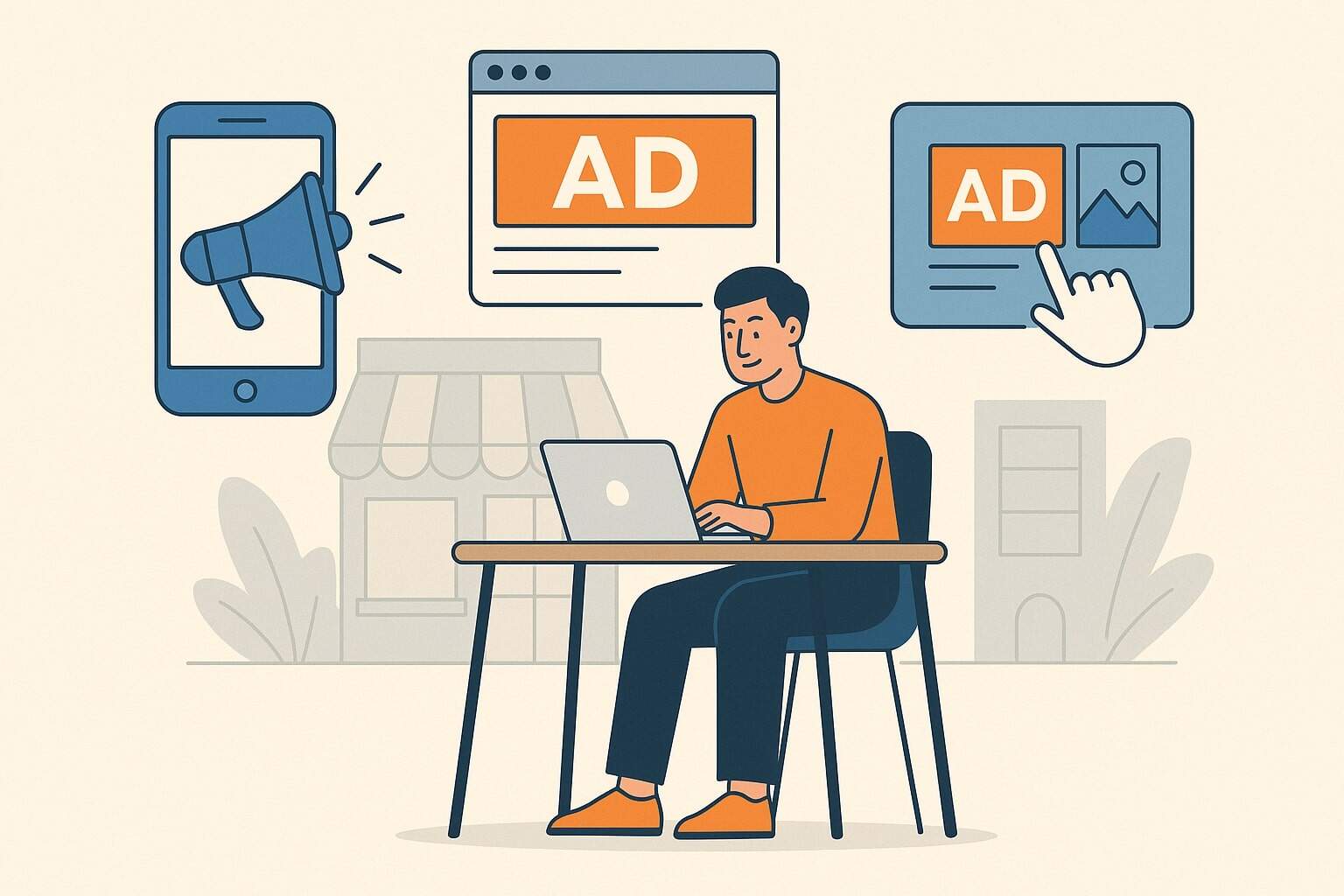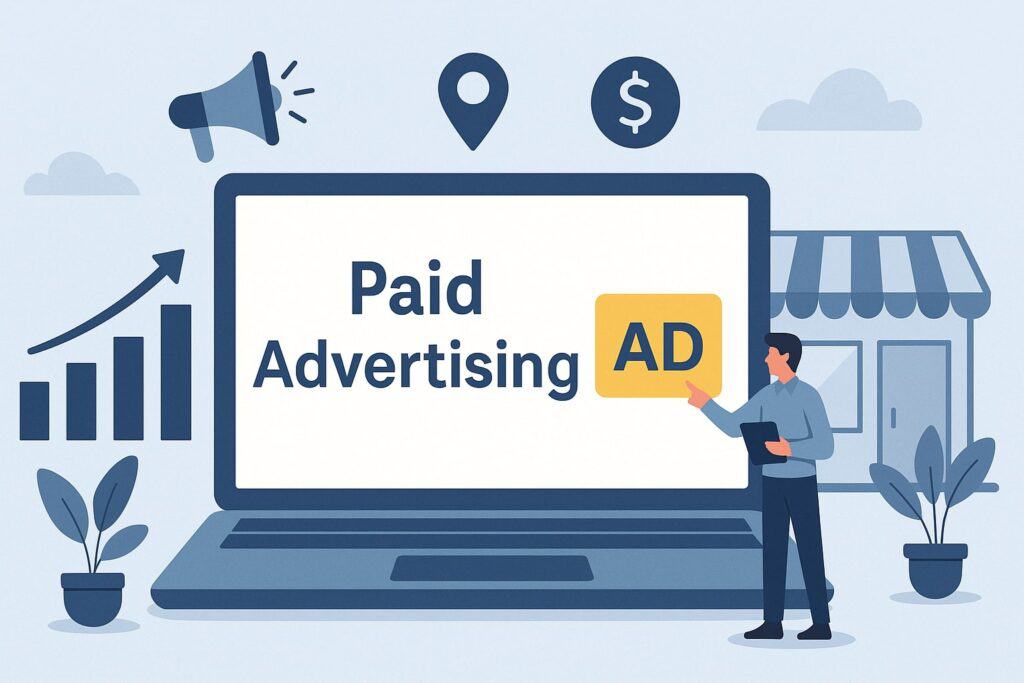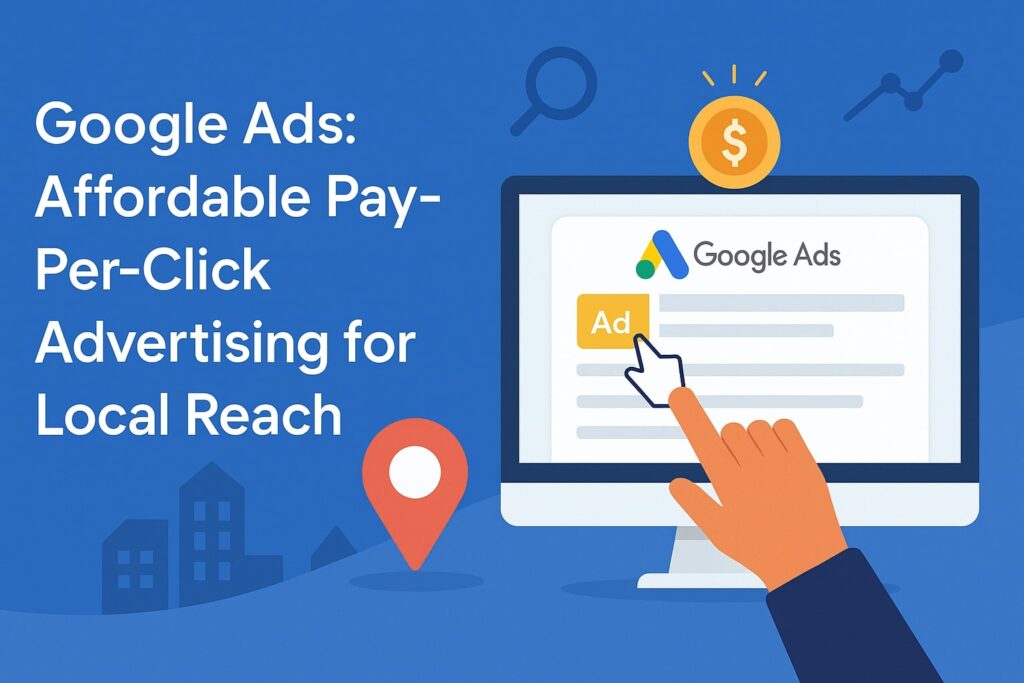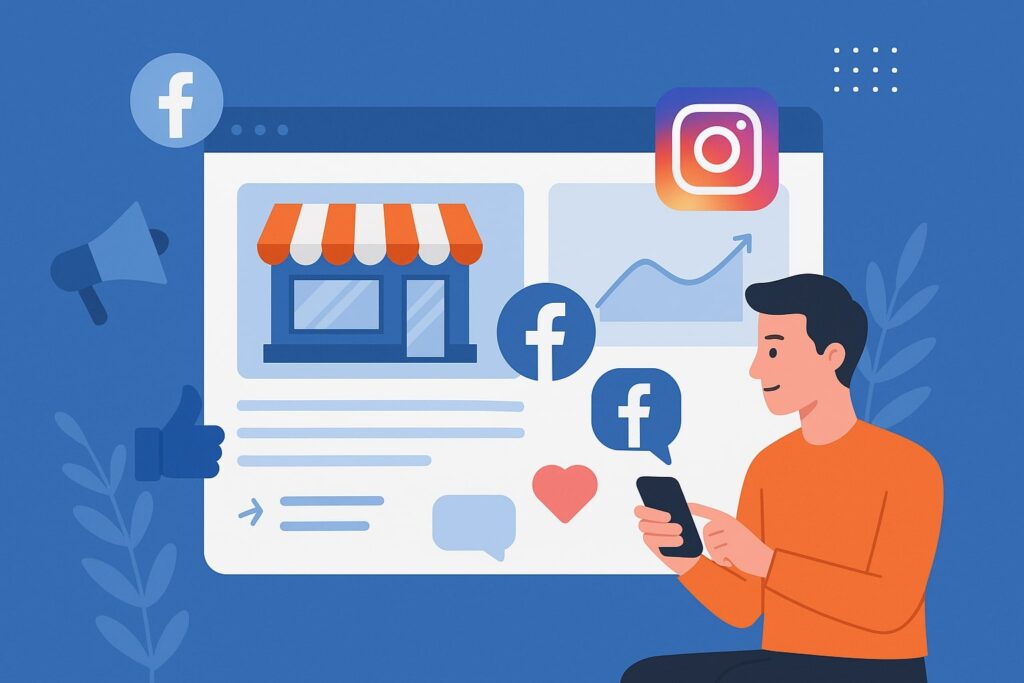
Affordable Paid Advertising Strategies for Local Businesses
In today’s competitive marketplace, small and local businesses face a tough challenge: how to reach new customers without exhausting their budgets. Paid advertising is often seen as something only large corporations can afford.
However, with the right strategy, local businesses can leverage affordable paid advertising solutions to drive meaningful traffic, increase sales, and strengthen brand recognition. The digital age has created more opportunities than ever before for local businesses to advertise affordably.
Instead of spending thousands on billboards, radio spots, or television commercials, small businesses now have access to cost-efficient platforms like Google Ads, Facebook Ads, Instagram promotions, and even hyperlocal advertising channels.
The challenge lies not in the availability of tools but in knowing how to use them effectively without overspending. In this comprehensive guide, we will explore the most effective and affordable paid advertising strategies for local businesses.
From Google’s pay-per-click (PPC) model to targeted social media campaigns, we will break down practical, budget-friendly approaches that local entrepreneurs can implement right away.
Whether you run a coffee shop, a boutique, a dental practice, or a neighborhood service, these strategies will help you gain visibility, attract the right audience, and grow sustainably.
Why Paid Advertising is Essential for Local Businesses

For many small and local businesses, word-of-mouth has traditionally been the strongest form of marketing. While personal recommendations remain important, relying solely on them in today’s digital-first world can limit growth.
Consumers now search online for nearly every type of service—from plumbers and landscapers to restaurants and gyms. If your business is not visible in these searches or on the platforms your customers use daily, you risk losing potential clients to competitors.
Paid advertising fills this gap by giving businesses the ability to appear directly in front of customers who are already looking for their products or services.
Unlike organic marketing, which can take months to generate results, paid ads provide instant visibility. A well-optimized campaign can put your business on the map within hours.
For local businesses, the benefits of paid advertising include:
- Targeted Reach – Instead of wasting money on broad campaigns, you can narrow down your audience by location, demographics, and even customer interests.
- Budget Control – Platforms like Google Ads and Facebook allow you to set daily or monthly limits, ensuring you never exceed your budget.
- Measurable Results – Paid ads provide analytics to measure clicks, conversions, and ROI in real time.
- Speed of Impact – Unlike SEO or organic social growth, paid ads generate immediate traffic.
- Competitive Advantage – Many small businesses still rely on outdated methods. Affordable paid advertising lets you stay ahead.
The key is affordability. By understanding how to maximize every dollar spent, small businesses can harness paid advertising not as a drain but as a growth driver.
Google Ads: Affordable Pay-Per-Click Advertising for Local Reach

Google Ads is one of the most powerful tools available to local businesses today. The platform allows advertisers to bid on keywords so that their ads appear when potential customers search for related terms.
Best of all, Google Ads works on a pay-per-click (PPC) model—meaning you only pay when someone actually clicks on your ad. This makes it a budget-friendly option for businesses that can’t afford to waste money on impressions with no action.
Why Google Ads Works for Local Businesses
Local businesses benefit immensely from Google Ads because customers actively searching on Google often have high intent to purchase. For example, someone searching “best pizza near me” is highly likely to order food within the hour. By targeting these keywords, businesses can connect with ready-to-buy customers.
Google Ads also offers location-based targeting, allowing you to ensure your ads are only shown to people in your service area. A plumber in Dallas doesn’t need to advertise to users in New York, and Google ensures that your budget is focused only on the right region.
Strategies to Maximize Google Ads on a Budget
- Use Long-Tail Keywords – Instead of bidding on expensive terms like “plumber,” aim for specific searches like “emergency plumber near downtown Dallas.” These cost less and target more qualified leads.
- Set Location Parameters – Use the “radius targeting” feature to focus on customers within a set distance of your business.
- Leverage Ad Extensions – Add call buttons, maps, and customer reviews to your ads to increase engagement without additional cost.
- Optimize Ad Scheduling – Run ads during peak business hours when customers are most likely to convert.
- Test Small Campaigns First – Start with $5–$10 a day to measure performance, then scale up what works.
By applying these tactics, Google Ads can become one of the most affordable paid advertising options for local businesses, delivering high ROI with relatively small investments.
Social Media Advertising: Facebook and Instagram for Local Businesses

Social media platforms have revolutionized how local businesses connect with customers. With over 3 billion active users across Facebook and Instagram, these platforms provide unmatched reach.
However, unlike traditional social posting, social media advertising allows businesses to place their products and services directly in front of targeted audiences for as little as a few dollars per day.
Why Social Media Ads are Cost-Effective
Facebook and Instagram’s advertising systems are highly advanced, allowing businesses to target users based on location, age, interests, behaviors, and even purchasing history. This hyper-targeting ensures that every penny you spend is directed toward users most likely to become paying customers.
Another advantage is the flexibility of ad formats. From image ads and video ads to stories and carousel ads, you can experiment with creative formats that resonate with your audience. Since platforms charge based on clicks or impressions, even a small $50 monthly budget can generate measurable results if optimized well.
Strategies to Maximize ROI on Social Media Ads
- Geo-Targeting – Focus on customers within a specific city, ZIP code, or radius around your shop.
- Retargeting Campaigns – Show ads to users who already visited your website or interacted with your social media.
- Engagement Ads – Instead of only pushing sales, run ads that encourage likes, shares, and comments to boost organic reach.
- Leverage User-Generated Content – Promote posts or testimonials from happy customers to build credibility.
- Experiment with Formats – Use short videos for engagement, carousel ads for product showcases, and story ads for urgency-based offers.
For local businesses such as cafés, boutiques, and salons, Facebook and Instagram ads can be a game-changer. They allow businesses to reach audiences in their community at a fraction of the cost of traditional print ads.
Leveraging Local Service Ads and Marketplaces
Google’s Local Service Ads (LSAs) and digital marketplaces like Yelp and Nextdoor have created powerful opportunities for local businesses to advertise affordably. Unlike traditional PPC ads, LSAs charge businesses only for valid leads, making them highly cost-efficient.
How Local Service Ads Work
Local Service Ads appear at the very top of Google search results when customers look for services such as electricians, plumbers, landscapers, and other trades. The unique aspect is that you only pay when a potential customer contacts you directly through the ad—whether by phone or message.
This cost-per-lead model ensures that your budget is focused only on generating genuine inquiries. For local businesses operating in service industries, LSAs are often more affordable than regular PPC campaigns.
Advertising on Marketplaces
Platforms like Yelp, Angie’s List, and Nextdoor allow local businesses to advertise to highly targeted audiences. For example:
- Yelp ads appear when users search for businesses in your category.
- Nextdoor ads help you target people in specific neighborhoods.
- Angie’s List provides lead generation for home service businesses.
Because these platforms already attract users who are actively looking for local services, the advertising cost tends to be lower compared to broader channels.
Strategies for Maximizing Marketplace Advertising
- Claim and Optimize Your Profile – Ensure your business listing is accurate, complete, and includes reviews.
- Use Promotions – Offer special discounts or coupons through your ad listings.
- Focus on Reviews – Positive reviews enhance ad performance, as users are more likely to trust highly rated businesses.
- Track Leads – Measure how many leads actually convert into paying customers to evaluate ROI.
For many local businesses, advertising on marketplaces provides affordable visibility with minimal management compared to running complex ad campaigns.
Video Advertising on a Budget: YouTube and TikTok
Video advertising is no longer reserved for big brands with huge production budgets. Platforms like YouTube and TikTok have democratized video ads, allowing even small local businesses to create engaging content with just a smartphone and a minimal budget.
Why Video Ads Work
Consumers love video because it’s engaging, easy to consume, and memorable. Studies show that viewers retain 95% of a message when delivered through video compared to only 10% through text.
For local businesses, video ads provide a chance to showcase personality, demonstrate products, and build stronger connections with the community.
YouTube allows businesses to run ads that appear before or during videos, while TikTok’s advertising system allows small businesses to promote short clips to targeted audiences.
Affordable Video Ad Strategies
- DIY Video Production – Use smartphones and free editing tools to create simple but authentic videos.
- Target Local Audiences – Both YouTube and TikTok allow geo-targeting to ensure your ads are shown only to people in your city or neighborhood.
- Leverage Customer Testimonials – Record short clips of customers sharing positive experiences.
- Keep It Short – Aim for videos under 30 seconds to maximize attention.
- Promote Seasonal Campaigns – Highlight events, holidays, or limited-time offers to create urgency.
By keeping production costs low and targeting only relevant audiences, local businesses can leverage video advertising as an affordable way to build brand awareness and drive engagement.
Retargeting: Affordable Way to Convert Interested Customers
One of the most cost-effective strategies in paid advertising is retargeting. This involves showing ads specifically to people who have already interacted with your business—visited your website, clicked your social post, or searched for your products.
Retargeting is powerful because these users are already familiar with your brand, meaning they are more likely to convert. Instead of spending money reaching cold audiences, you focus your budget on warm leads.
How Retargeting Works
When someone visits your website, a tracking pixel stores their data. Later, ads for your business appear as they browse other websites or social media platforms. This keeps your business top-of-mind and nudges them toward making a purchase.
Why Retargeting is Affordable
Since the audience is smaller and more specific, the cost of retargeting campaigns is lower than broad campaigns. You spend less but generate higher conversions. For example, a person who abandons a cart on your e-commerce site can be shown a retargeted ad offering free delivery to encourage checkout.
Best Practices for Retargeting
- Segment Audiences – Create different campaigns for website visitors, cart abandoners, or social media engagers.
- Personalize Ads – Show users the exact product they viewed instead of generic ads.
- Set Frequency Caps – Limit how often someone sees your retargeted ad to avoid annoyance.
- Use Incentives – Offer small discounts or bonuses to encourage final action.
Retargeting ensures no lead slips away without multiple reminders, making it one of the most budget-friendly strategies available to small businesses.
Measuring ROI and Optimizing Campaigns
Spending wisely on paid advertising means constantly tracking and improving campaigns. Without measuring performance, even affordable ads can drain your budget.
Key Metrics to Track
- Click-Through Rate (CTR) – How many people click after seeing your ad.
- Cost Per Click (CPC) – How much each click costs.
- Conversion Rate – The percentage of users who take the desired action (buying, booking, signing up).
- Return on Ad Spend (ROAS) – Revenue earned versus money spent.
- Customer Lifetime Value (CLV) – How much a customer is worth long term.
Tips for Optimizing Campaigns
- A/B Testing – Run multiple versions of ads to see which performs best.
- Pause Low-Performing Ads – Don’t waste money on underperformers.
- Use Analytics Tools – Platforms like Google Analytics and Facebook Insights provide in-depth tracking.
- Reinvest Profits – Scale successful campaigns by gradually increasing the budget.
By tracking results and making adjustments, local businesses can ensure they get the most out of every advertising dollar.
FAQs
Q1. What is the minimum budget needed for effective paid advertising?
Answer: Many local business owners hesitate to try paid advertising because they assume it requires thousands of dollars. In reality, platforms like Google Ads, Facebook, and Instagram allow you to start with as little as $5–$10 per day.
The key is not how much you spend initially but how strategically you spend it. Even with $150–$300 per month, a well-optimized campaign can generate new leads and customers.
The real focus should be on maximizing ROI. By targeting specific keywords, demographics, and locations, you can stretch a small budget significantly. Over time, as campaigns prove profitable, businesses can scale gradually.
Therefore, there is no set “minimum,” but consistency and smart targeting are more important than raw budget.
Q2. Are paid ads better than organic marketing for local businesses?
Answer: Both paid ads and organic marketing serve important purposes, but they work best when combined. Paid ads deliver immediate visibility, which is ideal for promotions, events, or when you’re just starting.
Organic marketing, on the other hand, builds long-term trust through SEO, content marketing, and social engagement.
For local businesses, a hybrid approach is most effective. Paid advertising can quickly attract customers while organic strategies like Google My Business optimization and customer reviews help establish credibility. The balance depends on your goals—use paid ads for speed and organic for sustainability.
Q3. How do I know which platform is best for my business?
Answer: The best platform depends on your industry, target audience, and budget. For service-based businesses like plumbers or electricians, Google Ads and Local Service Ads are often the most effective because they capture high-intent searches.
For product-based businesses like boutiques or bakeries, social media platforms like Facebook and Instagram work well because they allow for visual promotion.
Testing is essential. Start small on multiple platforms, analyze the performance, and double down on the channel delivering the best ROI. What works for one business may not work for another, so experimentation is key.
Q4. Can I manage paid advertising on my own or should I hire an expert?
Answer: It is entirely possible for local businesses to manage their paid advertising campaigns independently, especially with platforms designed to be user-friendly.
Google Ads and Facebook provide step-by-step guidance, and there are countless free tutorials online. Starting small allows business owners to learn and adjust without risking large sums of money.
However, as campaigns grow more complex, hiring an expert or agency can save time and improve results. Professionals bring advanced knowledge, including keyword research, ad copywriting, and optimization strategies.
If your business can’t yet afford expert help, begin by managing campaigns in-house and gradually transition to external support as your budget allows.
Conclusion
Affordable paid advertising is not about spending the least amount of money—it’s about spending wisely. With platforms like Google Ads, Facebook, Instagram, YouTube, and Local Service Ads, local businesses can gain visibility, attract customers, and compete with larger companies without breaking the bank.
The secret lies in targeting the right audience, optimizing campaigns regularly, and balancing paid efforts with organic growth strategies. By starting small, testing consistently, and reinvesting in what works, local businesses can transform modest advertising budgets into powerful engines of growth.
In a world where consumers search, shop, and engage online more than ever, paid advertising is no longer optional for local businesses—it’s essential. When executed strategically, even a few dollars a day can lead to steady growth, loyal customers, and a thriving business.